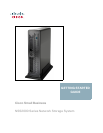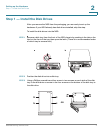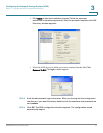
1
NSS2000 Getting Started Guide 1
Introduction
Thank you for choosing the Cisco Business Series Network Storage System
(NSS).
Administering a network can be a difficult job. Finding low-cost ways to simplify
your data-management tasks means that you have more resources to dedicate
elsewhere. The NSS is a Network Attached Storage (NAS) unit that appears as a
native file server for the various clients within your network, including Windows,
Apple Macintosh, UNIX, and Linux platforms. The biggest benefit to your users is
that they can now access data that might be stored across different physical
platforms as simply as if it were on their own computers. The NSS provides a
single repository that is completely dedicated to storage, ensuring the integrity,
reliability, and accessibility of your data for a relatively low cost.
The NSS lets you install up to two physical disk drives. The NSS uses the most
common file-based protocols such as NFS, CIFS, and FTP for file sharing.
The NSS2000 Series includes the NSS2000 and NSS2050 models. Check
www.cisco.com/go/smallbiz for additional information.
Benefits
The NSS offers the following main advantages to your business:
• Cross-platform File Sharing: Share files easily and inexpensively across
heterogeneous platforms over a cost-effective Ethernet and IP network.
• Easy Installation and Administration: With a basic understanding of
networking, the NSS is easily configured, managed, and made available to
all of your networked users.
• Data Consolidation: Centralize data to reduce management costs and
maximize your investment in existing hardware. This also means better data
security.


















